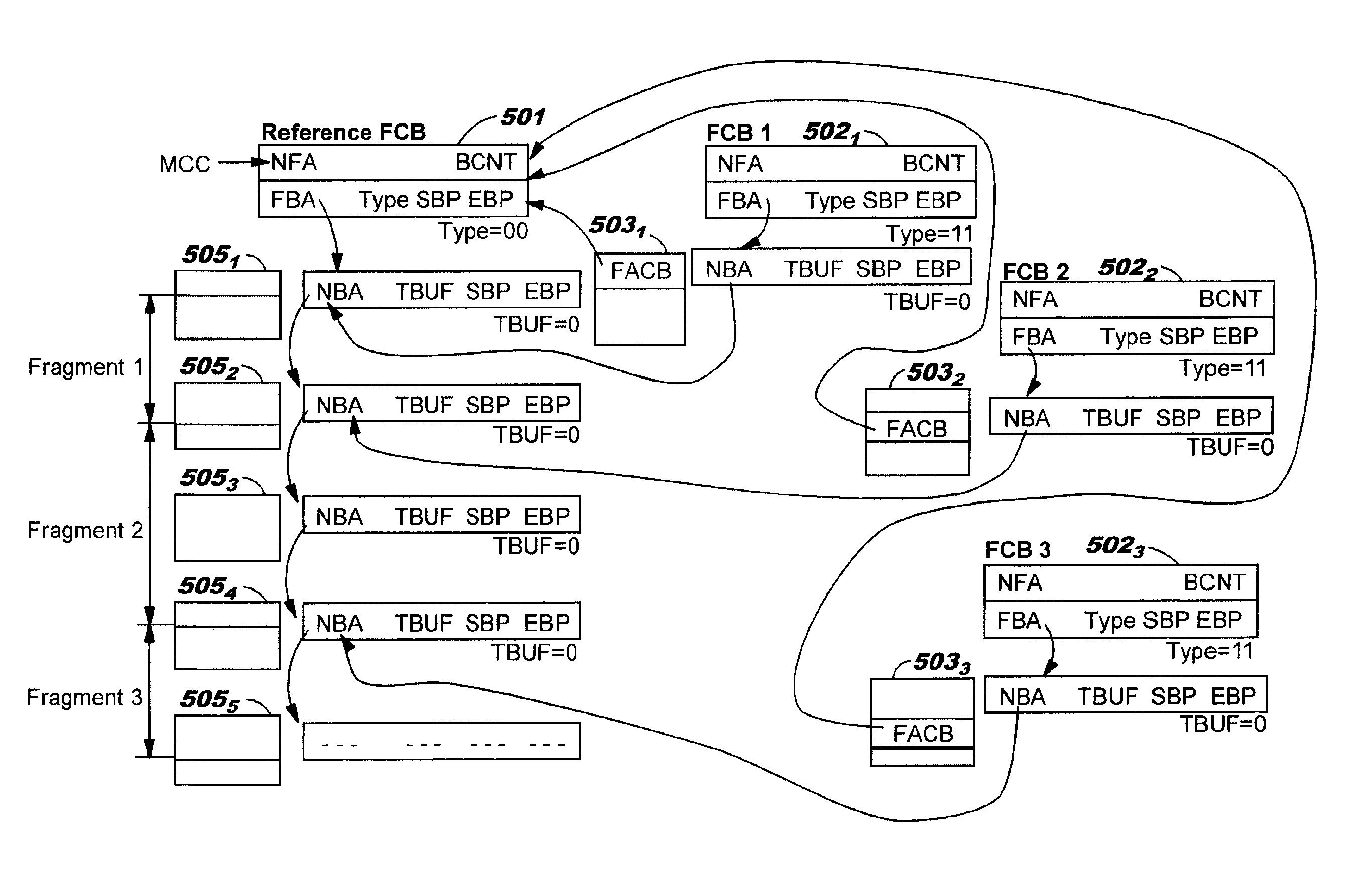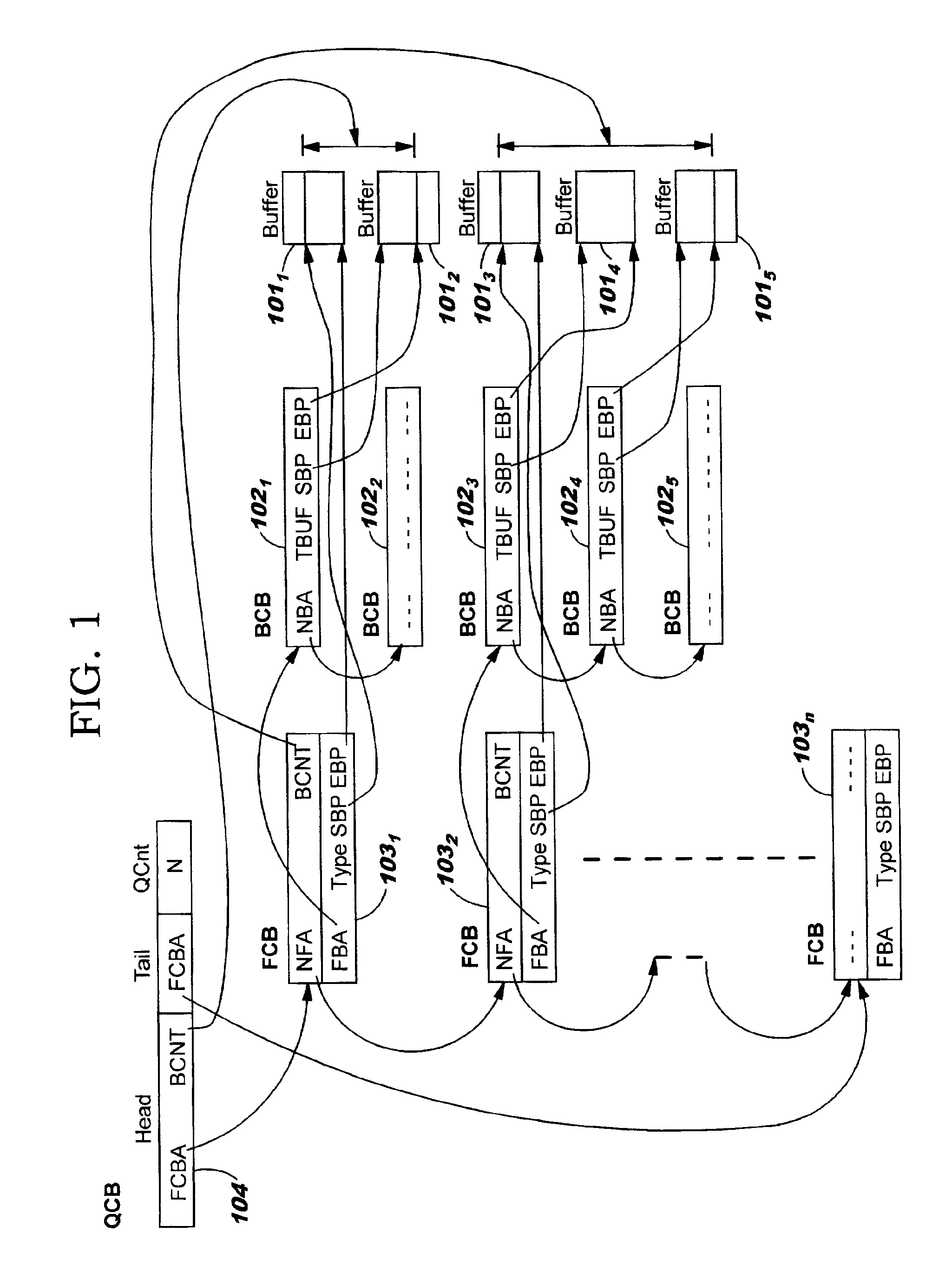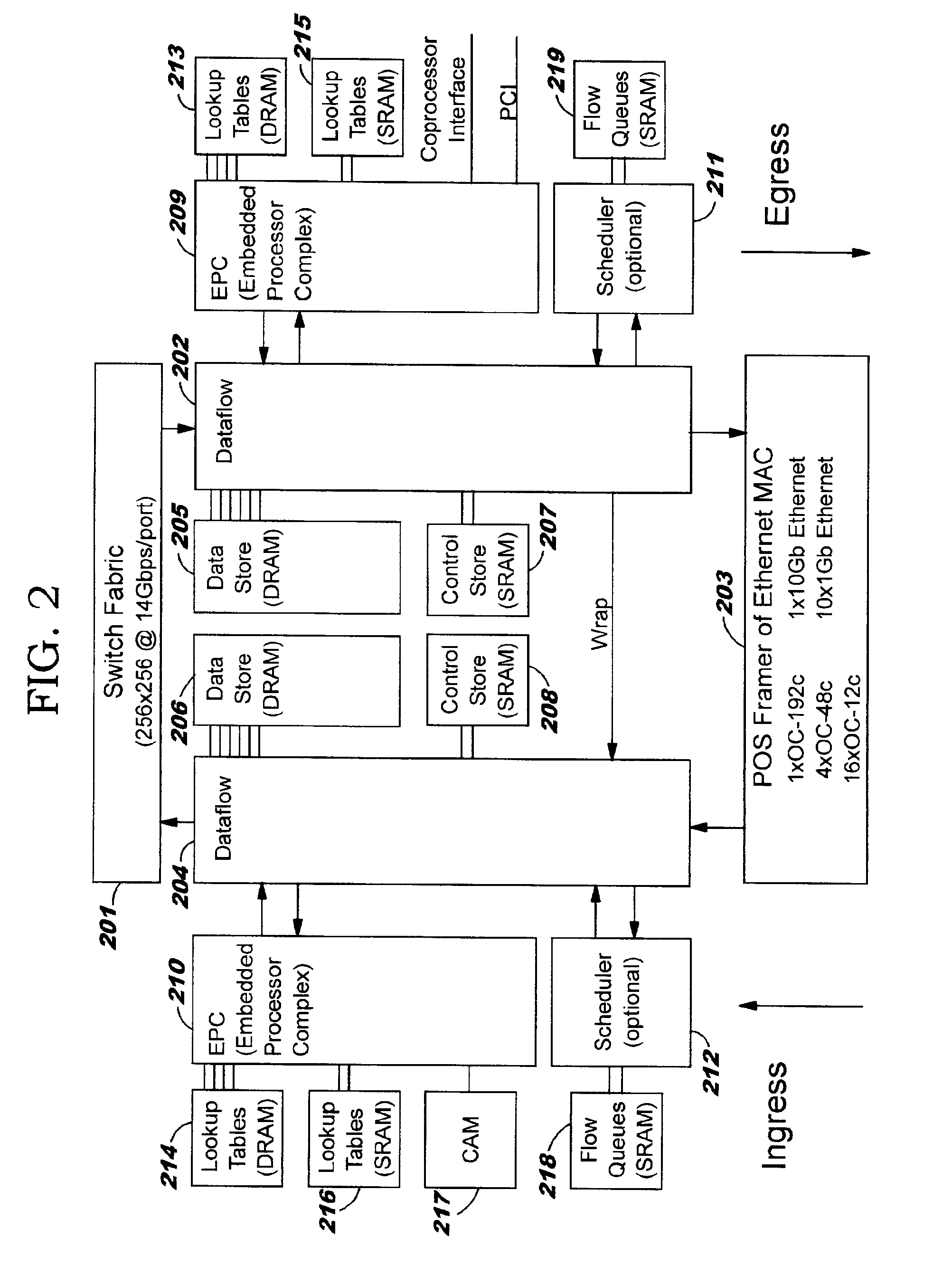Data structures for efficient processing of IP fragmentation and reassembly
a data structure and fragmentation technology, applied in the field of communication on a network by a network processor, can solve the problems of imposing a significant burden on memory allocation requirements, and the high performance network processors generally cannot afford to allocate the additional memory bandwidth required in this approach, so as to reduce memory requirements and minimize memory allocation requirements
- Summary
- Abstract
- Description
- Claims
- Application Information
AI Technical Summary
Benefits of technology
Problems solved by technology
Method used
Image
Examples
Embodiment Construction
[0018]Referring now to the drawings, and more particularly to FIG. 1, there is shown the data structures. A frame is stored in a series of buffers 1011 to 1015. Each buffer 101 has a corresponding Buffer Control Block (BCB) 1021 to 1025, which is used to link the series of buffers into a frame. Each frame has a corresponding Frame Control Block (FCB) 1031 to 103n, which is used to link a series of frames into a queue. Each queue has a Queue Control Block (QCB) 104, which maintains the address of the first and last FCB 103 in the queue, and a count of the number of frames in the queue.
Data Structure Definitions
[0019]Buffers 101 are used for storage of data. Each buffer 101 is 64-bytes in size and may store from 1 to 64-bytes of valid data. All valid data within a buffer 101 must be stored as a single contiguous range of bytes. Multiple buffers are chained together via a linked list to store frames larger than 64 bytes.
[0020]Initially, all buffers 101 are placed in the free buffer que...
PUM
 Login to View More
Login to View More Abstract
Description
Claims
Application Information
 Login to View More
Login to View More - R&D
- Intellectual Property
- Life Sciences
- Materials
- Tech Scout
- Unparalleled Data Quality
- Higher Quality Content
- 60% Fewer Hallucinations
Browse by: Latest US Patents, China's latest patents, Technical Efficacy Thesaurus, Application Domain, Technology Topic, Popular Technical Reports.
© 2025 PatSnap. All rights reserved.Legal|Privacy policy|Modern Slavery Act Transparency Statement|Sitemap|About US| Contact US: help@patsnap.com



